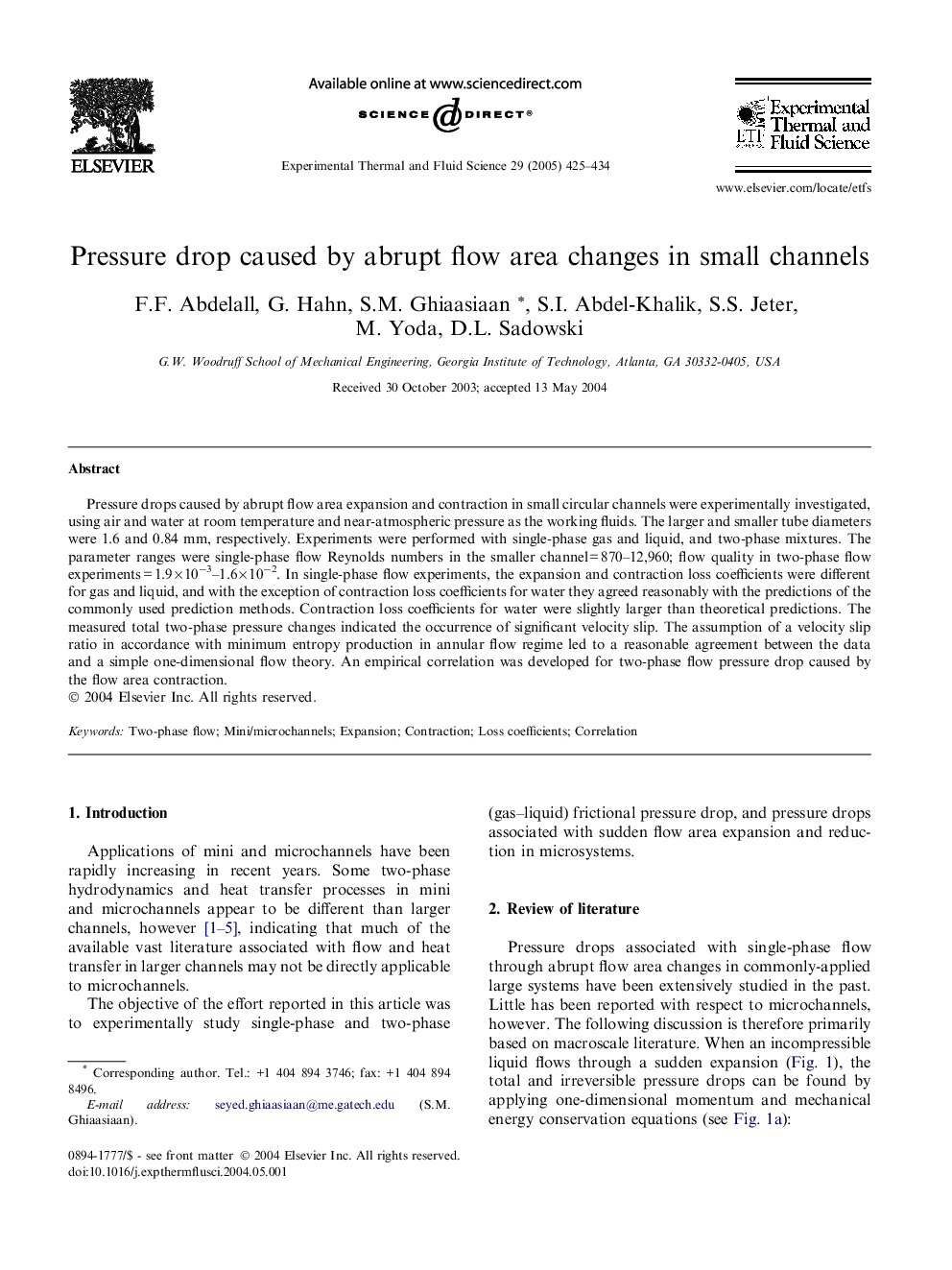| Article ID | Journal | Published Year | Pages | File Type |
|---|---|---|---|---|
| 10392247 | Experimental Thermal and Fluid Science | 2005 | 10 Pages |
Abstract
Pressure drops caused by abrupt flow area expansion and contraction in small circular channels were experimentally investigated, using air and water at room temperature and near-atmospheric pressure as the working fluids. The larger and smaller tube diameters were 1.6 and 0.84 mm, respectively. Experiments were performed with single-phase gas and liquid, and two-phase mixtures. The parameter ranges were single-phase flow Reynolds numbers in the smaller channel = 870-12,960; flow quality in two-phase flow experiments = 1.9 Ã 10â3-1.6 Ã 10â2. In single-phase flow experiments, the expansion and contraction loss coefficients were different for gas and liquid, and with the exception of contraction loss coefficients for water they agreed reasonably with the predictions of the commonly used prediction methods. Contraction loss coefficients for water were slightly larger than theoretical predictions. The measured total two-phase pressure changes indicated the occurrence of significant velocity slip. The assumption of a velocity slip ratio in accordance with minimum entropy production in annular flow regime led to a reasonable agreement between the data and a simple one-dimensional flow theory. An empirical correlation was developed for two-phase flow pressure drop caused by the flow area contraction.
Related Topics
Physical Sciences and Engineering
Chemical Engineering
Fluid Flow and Transfer Processes
Authors
F.F. Abdelall, G. Hahn, S.M. Ghiaasiaan, S.I. Abdel-Khalik, S.S. Jeter, M. Yoda, D.L. Sadowski,
